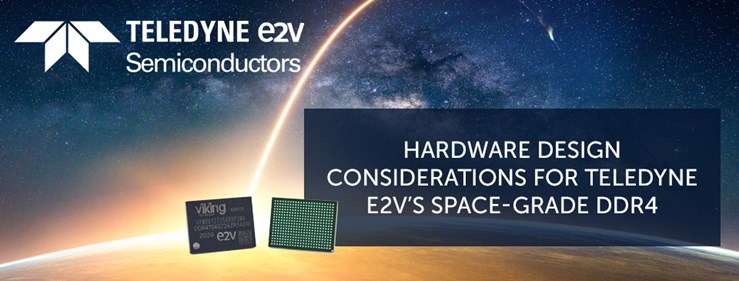
Fast, highly reliable, and radiation tolerant memories are a Must Have feature for complex Space Edge Computing systems : DDR4 will allow the Space industry to offer higher-throughput on-board processing and increased acquisition times enabling new Earth-Observation, space-science and telecommunication applications, e.g. ultra high-resolution imagery, live streaming video and on-board AI.
I previously introduced Teledyne e2v Space Radiation Tolerant DDR4 for space applications DDR4T04G72, offering 4 GB of volatile storage at a clock frequency up to 1.2 GHz and a data rate of 2.4 GT/s (bandwidth of 172.8 Gb/s), and this white paper will explore deeper areas of such a Space DDR4 memory.
First part of this paper will go into technical considerations on SDRAM, before extending to the DDR4 architecture itself and its organization, since DDR4 contains new architectural and hardware features which need to be considered to ensure design is right-first-time.
As examples, Point-to-point connection between a PolarFire FPGA and Teledyne e2v DDR4T04G72 will then be highlighted, as well as connection of multiple DDR4 devices to a Xilinx KU060 FPGA.
Finally, I will conclude with the benefits of DDR4 over DDR3, and single & multi-mode DDR4 configuration storage and capacity will be given.
If you wish to read more, please click on the following link to download our white paper.
Please fill out & submit the form to receive an answer from our Sales Team or Application Engineers.